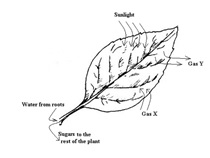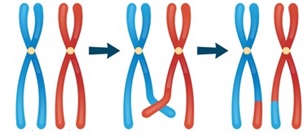Question 1
a) Define the term Haemolysis
b) State one way of reversing plasmolysis.
Answer
a) Haemolysis - Bursting of Red Blood Cells/Erythrocytes due to excessive gain of water molecules by osmosis from a hypotonic / dilute solution / Distilled water.
b) Dip the cell in distilled water / dilute / hypotonic solution for some time.
b) Dip the cell in distilled water / dilute / hypotonic solution for some time.
Question 2
Name the kingdom in which all members
a) That are Prokaryotic
b) Have Cellulose Cell wall
Answer
a) Monera
b) Plantae
b) Plantae
Question 3
The diagram of a leaf shown below illustrates the photosynthesis process

a) State TWO roles of light during this process.
b) Identify Gas Y in case a potted plant was placed in the dark for 2 hours.
Answer
a) Photolysis / Breakdown of water molecules to hydrogen ions and Oxygen; Generation of Energy.
b) Carbon (IV) Oxide.
b) Carbon (IV) Oxide.
Question 4
a) What is an enzyme?
b) State TWO roles of muscles in the stomach
Answer
a) Enzyme - Biocatalyst/Substance that increases/catalyses rate of metabolic reactions
b) 1. Churning/Mixing of food and gastric/digestive juices
2. Regulates movement of food. Acts as a valve
b) 1. Churning/Mixing of food and gastric/digestive juices
2. Regulates movement of food. Acts as a valve
Question 5
The diagram below is an illustration of changes in chromosomal association

a) Which term is used to describe the association of chromosomes as shown in B
b) Explain how the process labelled C benefits the theory of evolution.
Answer
a) Synapsis
b) Crossing over/exchange/mixing of genes; leads to variation; whose accumulation over time may lead to emergence of new species/evolution.
b) Crossing over/exchange/mixing of genes; leads to variation; whose accumulation over time may lead to emergence of new species/evolution.
